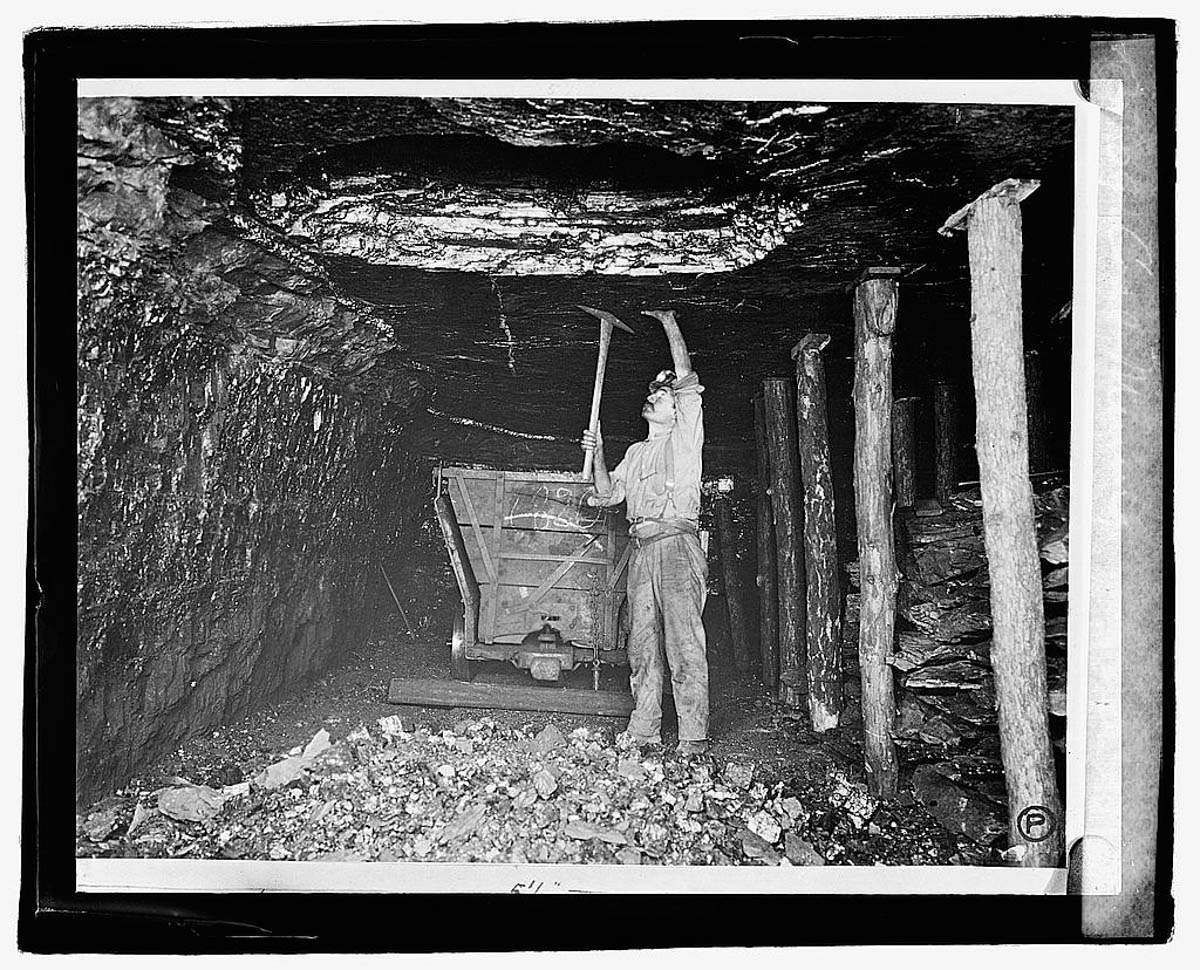For our “Pick 5” blog series, we ask members of the Radio Bristol team to pick five songs within a given theme – from heartsongs to murder ballads and everything in between! Once they pick their “5,” they get the chance to tell us more about why they chose those songs. With a diverse staff of knowledgeable DJs, we’re sure to get some interesting song choices, which might introduce you to some new music, all easily accessible by tuning into Radio Bristol! This month’s “Pick 5” focuses on coal-mining songs and is from Rich Kirby, host of Radio Bristol’s Old Kentucky Bound airing Thursdays at 2:00pm!
The coal mining era is coming to an end in southwest Virginia, eastern Kentucky, and southern West Virginia. Coal has had its share of booms and busts over the decades, but this time it looks like the elevator is going to go to the basement and stay there. What with cheap natural gas, cheap solar and wind power, and our awareness of the climate crisis, coal plants are shutting down, and no new ones are being built. Coal will still be used for steelmaking, but that’s only a small share of the market.
But what a ride it’s been! Coal has sustained mountain communities for well over a century with good-paying jobs and an important place in the national economy. However, as with so many things, these benefits have come at a price. For instance, 100,000 miners have died on the job since 1900, and Black Lung Disease and other occupational ailments have helped make coalfield communities some of our least healthy. Strip mining has left hundreds of mountains scarred. And despite the coal jobs, income is low, and this area consistently ranks at or near the bottom of quality-of-life measures.
As you would expect when such an intense way of life meets a culture with a strong musical tradition, there is a ton of coal-mining music – more, I believe, than from any other industry. Mining songs shine a light on the many ups and downs of the mining life. Here’s just a small sampling (and despite the “Pick 5” title, I couldn’t pick just five, so you get a bonus song for six!):
“Which Side Are You On,” written and sung by Florence Reece
The Great Depression hit coalfield communities hard. Desperate companies cut wages to the bone, then cut more, to the point where miners were facing actual starvation. Desperate miners tried to unionize, an action which companies met with armed repression – especially in Harlan County, Kentucky, where coal completely controlled the county government. Harlan miner Sam Reece, an organizer for the National Miners Union, worked in hiding with a price on his head. One night his wife Florence had had enough. “When the thugs were raiding our house off and on, and Sam was run off, I felt like I just had to do something to help. The little children, they’d have little legs and a big stomach. Some of the men staggered when they walked, they were so hungry… We didn’t even have any paper, so when I wanted to write ‘Which Side Are You On?’ I just jerked the calendar off the wall and sat down and wrote the words down on the back.”
Her powerful song went on to become an anthem of the labor movement, sung on countless picket lines and recorded by everyone from Pete Seeger to Natalie Merchant.
“’31 Depression Blues,” written and sung by Ed Sturgill
The Union – specifically the United Mine Workers of America – brought miners and their communities out of the pits of despair and into the middle class. Ed Sturgill managed to get all that history into two minutes and forty-two seconds. From the days of scrip (company money) and miners paid by the ton (with the company doing the weighing) to FDR’s New Deal and the UMW Welfare and Retirement Fund to a plea to miners to stick with the union – it’s all here in this one song.
Ed Sturgill was from either Harlan or Wise County – I’ve heard both. His banjo style tells us he was likely a good buddy of Dock Boggs.
“Coal Miners Boogie,” sung by George Davis
Listen to a lot of mining songs, and you can get the idea it’s all strikes and disasters, and indeed there have been plenty of both. But a lot of old miners like to remember the camaraderie of men whose lives were in each others’ hands, and the freewheeling excitement of coal towns on Saturday night. George Davis, “the Singing Miner,” did daily radio shows in Hazard and Pikeville, Kentucky. His songs capture a lot of this strong, cheerful spirit.
“West Virginia Mine Disaster,” written and sung by Jean Ritchie
I once sang this at an open mic in Portland, Oregon. Afterwards a young woman came up in the throes of great emotion. Seems her grandfather had been a West Virginia coal miner who had died recently of Black Lung Disease. She told me she’d been holding all her feelings inside until suddenly Jean’s piece gave her permission to grieve. Such is the power of a great song.
“Dyin’ to Make a Livin’,” written by W. V. Hill, sung by Foddershock
Living in the hills of Dickenson County, Virginia – Clinchfield Coal Company’s historic center – W. V. Hill knows firsthand the toll that mining can take on a human body, and the drugs that give the promise of being able to go on another day. This song was part of the Grammy-nominated Music of Coal collection that appeared in 2007.
“Black Dust Fever,” sung by the Wildwood Valley Boys
Black Lung Disease should have been wiped out by health and safety laws that require adequate ventilation in the mines, but shoddy enforcement has kept that goal out of reach. After years of decline, Black Lung is again on the rise. I’ve been unable to find who wrote this song, or where the Indiana-based Wildwood Valley Boys got it. I can’t imagine a pithier way of expressing the existential dilemma of coal communities than the chorus:
“The black dust has taken my last dying breath / But the mines kept my family from starving to death.”


